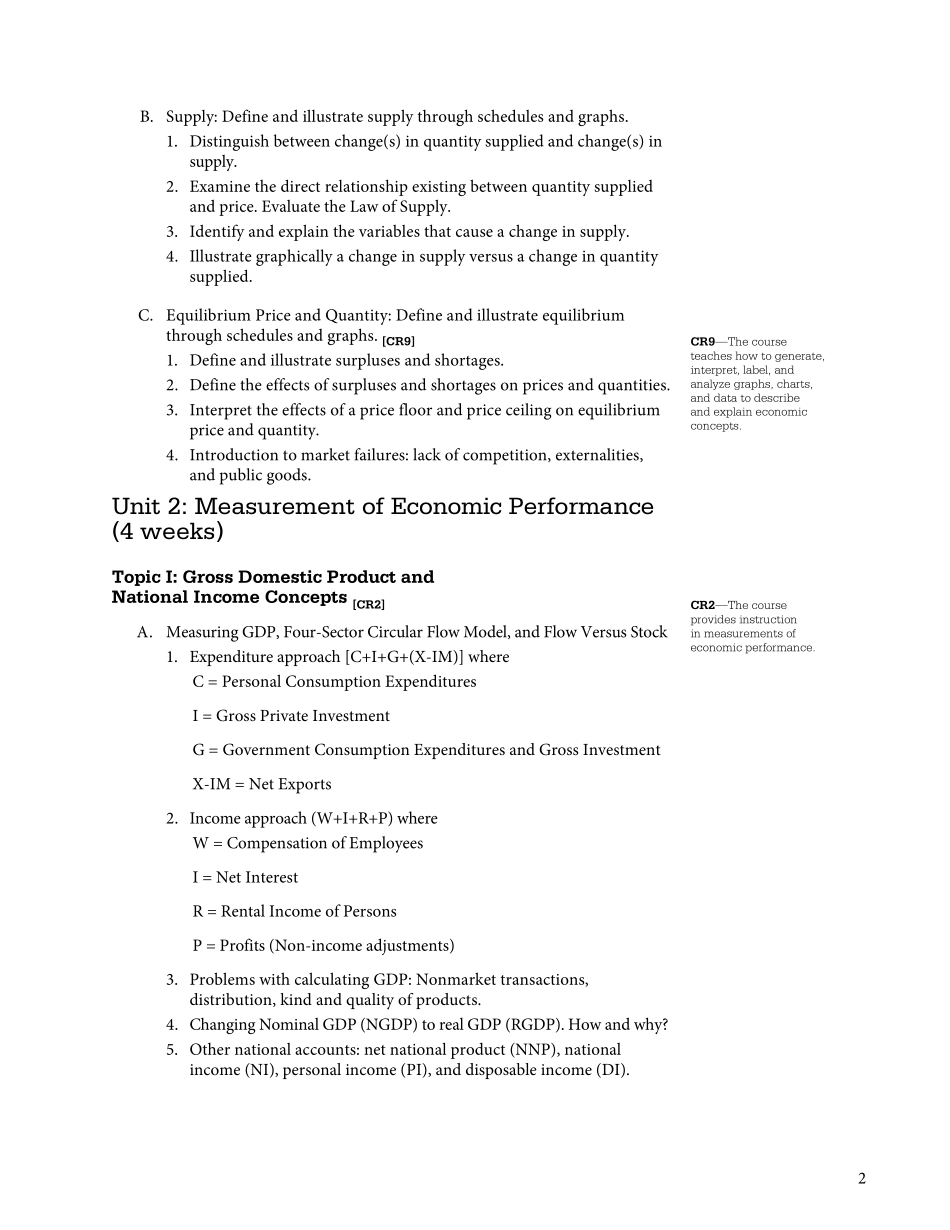AP® Macroeconomics Syllabus 2The initial discussion of this syllabus attempts to get students to think economi-cally. A detailed outline of the course follows. Texts Required Text: Baumol, William J., and Alan S. Blinder. Economics: Principles and Policy. 7th ed. Fort Worth, Texas: The Dryden Press, 1997. Supplementary Text: Tucker, Irvin B. Economics for Today. Minneapolis/ St. Paul, MN: West Publishing Company, 1997. Course Outline Unit 1: An Introduction to Economics (4 weeks) Topic I: Basic Economic Concepts [CR1] A. Scarcity: What is it? Why is it so important to economic thought? B. Opportunity Cost: Define and compute it. Why can it never be avoided? C. Production Possibilities: Construct and interpret production possibilities schedules, and graphs; relate production possibilities curves to the issues of scarcity, choice and cost. Why are most PPCs bowed out? D. Specialization and Comparative Advantage: Define and calculate absolute and comparative advantages for production exchange. E. Functions of Any Economic System 1. Answering the questions: What to produce? How to produce? For whom to produce? 2. Define ways societies determine allocation, efficiency, and equity. Topic II: Demand, Supply, and Price Determination [CR3] A. Demand: Define and illustrate demand through schedules and graphs. 1. Distinguish between change(s) in quantity demanded and change(s) in demand. 2. Examine the inverse relationship existing between quantity demanded and price. Evaluate the Law of Demand. 3. Identify and explain the variables that cause a change in demand. 4. Illustrate graphically a change in demand versus a change in quantity demanded. [CR9]CR1— The course provides instruction in basic economic concepts.CR3— Th...


